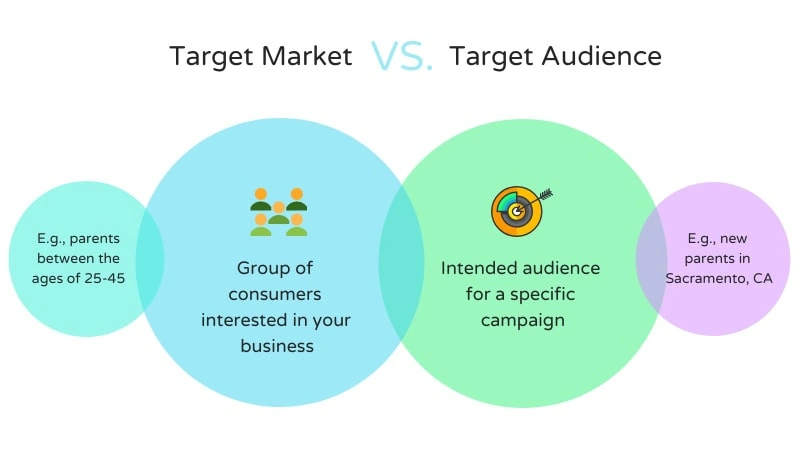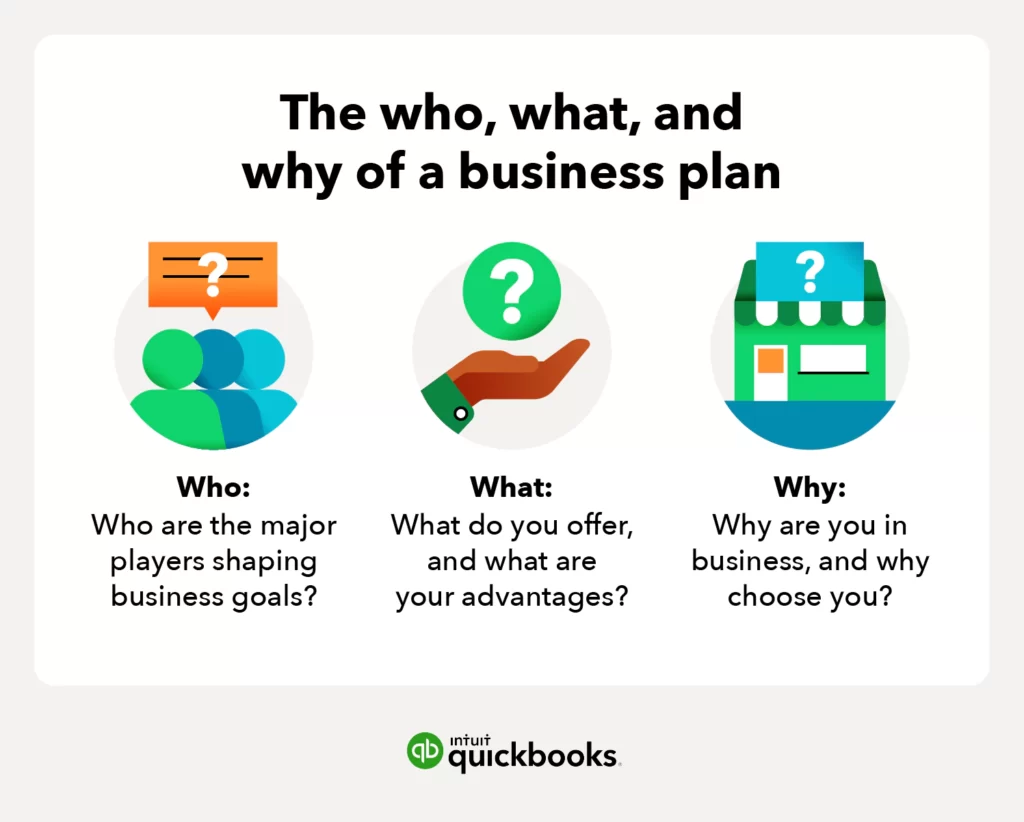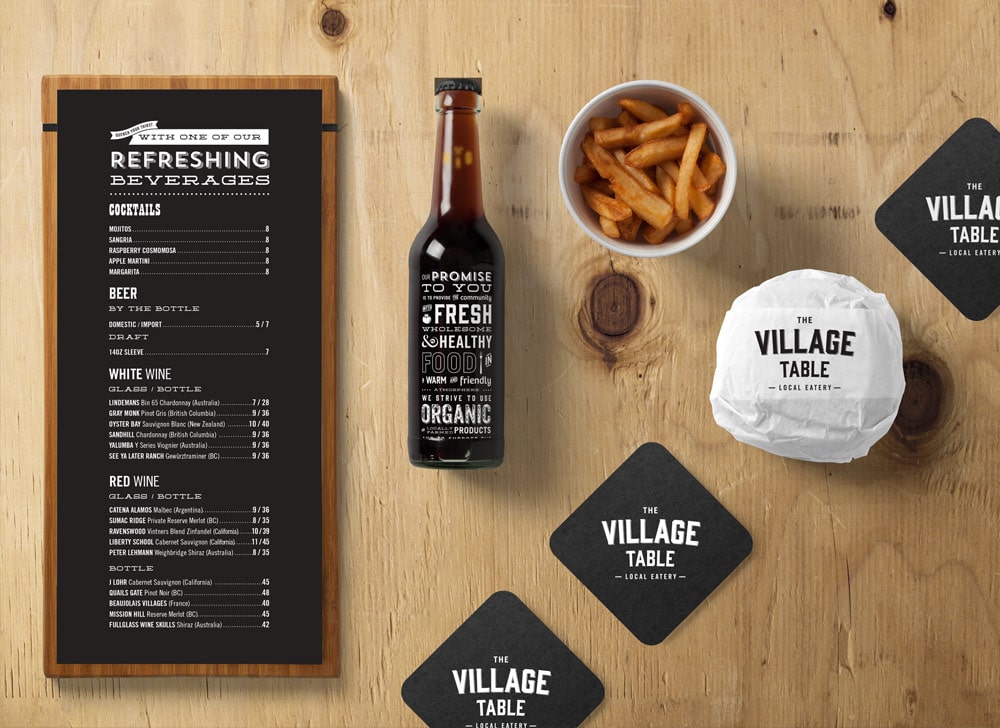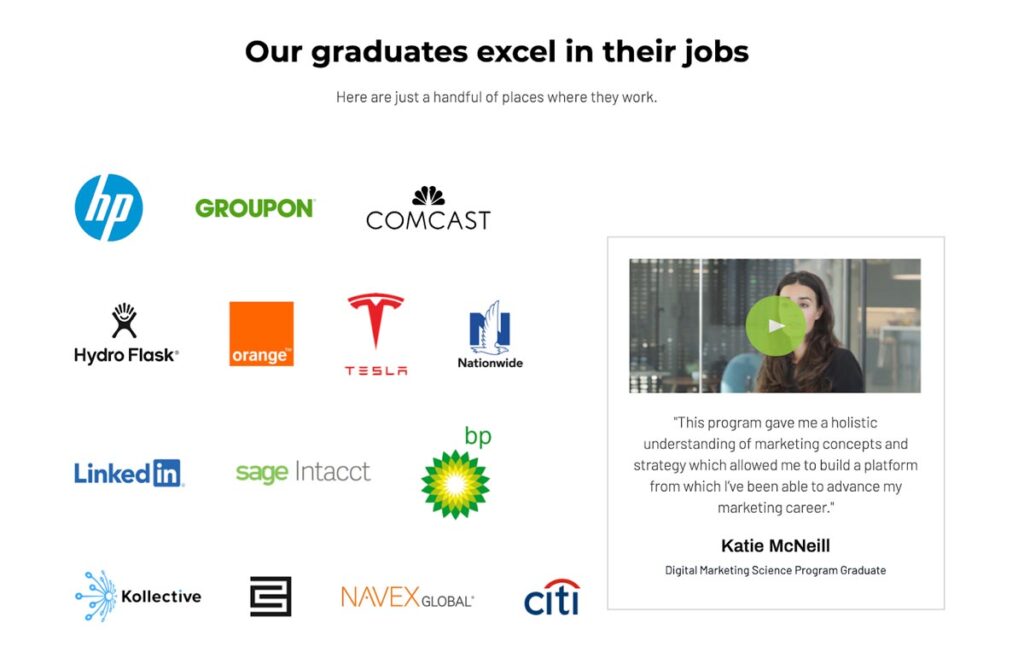How to Get Clients for a Local Graphic Design Business
As a skilled graphic designer, your ability to create eye-catching, memorable, and practical designs can be the driving force behind the success of local enterprises. Before you can transform the visual landscape of your community, you need to master the art of attracting and gaining local clients. In this comprehensive guide, we'll unveil tried-and-tested strategies that will empower you to cultivate strong relationships, create an indelible impact, and establish yourself as your community's go-to graphic design expert.
Discover the secrets to unlocking endless opportunities and building a thriving local graphic design business that fuels your passion and fosters the growth and success of those around you.
Table of Contents
How to Build a Local Graphic Design Business
The journey to build a thriving local graphic design business in the competitive UK market, which had a revenue of £3.5bn in 2022, can be exciting and challenging. A solid foundation is critical for long-term success, and there are several vital steps to consider when laying the groundwork.
Identify your target market.

A target market is a specific group of potential clients or customers with shared characteristics, needs, and preferences. By comprehending these elements, you can adjust your products and promotions to match, guaranteeing that your offerings speak to the correct people and growing your odds of bringing in clients.
Research your area's demographics, industries, and businesses to identify your target market. Analyse factors such as age, income, education levels, and cultural background, as these can impact the design services in demand. Also, investigate the dominant industries in your region, as this can help you determine which sectors will likely require your services.
For example, suppose your local area has a thriving hospitality industry with many restaurants, bars, and cafes. In that case, you might position yourself as a specialist in designing menus, promotional materials, and branding for these businesses. Alternatively, if your region has a strong presence of tech startups, you might focus on offering web design, app development, or digital marketing services.
Once you've determined which niche you can best serve, take the time to understand your target audience's unique challenges, preferences, and expectations. Conduct market research by gathering information through surveys, interviews, or focus groups to gain insights into their specific needs. This knowledge will help you develop tailored services, create compelling marketing messages, and establish a strong connection with your target market.
Next, develop a solid business plan. This document should outline your objectives, target market, USP, CAC, pricing strategy, and marketing approach. A well-prepared business plan will help you stay focused, measure progress, and secure funding if needed.
What is a Unique Selling Proposition (USP)?
The USP is a marketing concept that refers to the specific factor or feature that sets your business apart from its competitors. Your USP should be the core of your marketing message and will help potential clients understand why they should choose you over other designers. Your USP should communicate the distinctive value you bring to your clients, making your services more desirable and memorable.
Consider a real-life example of a graphic designer specialising in creating eco-friendly, sustainable designs for environmentally conscious businesses. This designer's USP might focus on their deep understanding of sustainable design principles, ability to use eco-friendly materials and techniques, and commitment to helping clients reduce their carbon footprint through thoughtful design choices. By emphasising this unique angle, the designer appeals to a specific target audience who shares their values and is likelier to choose their services over competitors who may offer different levels of environmental consideration. This USP sets the designer apart in a crowded market and allows them to build a strong brand identity and connect with clients who share their passion for sustainability.
What is CAC for Graphic Designers?
Customer Acquisition Cost (CAC) is a metric that refers to the total cost of acquiring a new client. These costs include marketing, sales, and other related expenses. Understanding your CAC can help you evaluate the effectiveness of your marketing efforts and make informed decisions about where to allocate resources.
To calculate CAC, divide the total expenses of acquiring new clients by the number of clients gained within a specific period. For example, if you spent £1,000 on marketing efforts and gained ten clients, your CAC would be £100 per client.
By monitoring your CAC, you can assess the efficiency of your marketing strategies, identify areas for improvement, and optimise your approach to maximise return on investment. Keeping your CAC in check will ensure the profitability and sustainability of your graphic design business.
How to Make a Business Plan?

A business plan is an essential written document that describes and overviews your company's future, detailing your business strategy and critical goals. It is crucial for all businesses, whether they are sole traders, partnerships, or limited companies. A well-crafted business plan is a roadmap to success, allowing you to turn your dreams into an action plan.
Every business plan should include seven key sections:
- Executive summary
- Business description
- Market strategies
- Competitor analysis
- Design and development plan for your products and services
- Operations and management plan
- Financial information, planning, and factors
For instance, if you are a graphic designer looking to establish a local business focused on creating branding materials for small to medium-sized companies in the tech sector, your business plan might include objectives such as building a solid local presence, attracting a specific number of clients within the first year, and expanding to offer a broader range of services in the future.
To achieve these objectives, identify your target market and their specific needs, outline your unique selling proposition (USP) that sets you apart from competitors, calculate your customer acquisition cost (CAC), determine your pricing strategy, and develop your marketing approach.
A well-designed business plan helps you focus and develop ideas, identify priorities, and consider options to seize opportunities. It also serves as a benchmark for your company's performance, allowing you to analyse your competition and understand the market dynamics. Conducting a competitor analysis can provide valuable insights into your industry and reveal recent changes or innovations.
A business plan shows that you clearly understand your business and its market. It sets out how you expect your company to perform in the coming years and how you will overcome any potential obstacles. It is vital for securing funding, as most banks and lenders require a detailed business plan for loans, including startup loans.
Besides attracting financing, a comprehensive business plan is essential for attracting talent. As your company grows, you may need to hire employees, recruit senior management, or establish distributor partnerships. A sound business plan should convey your company's vision, mission statement, and why someone would want to work with you.
Creating a well-developed business plan will give you a roadmap for building and growing your local graphic design business. This plan will help you stay focused on your objectives, make informed decisions, and measure your progress toward your goals. A solid business plan can also be essential when approaching potential investors, partners, or financial institutions for funding or support.
How to Create an Attractive Portfolio
A captivating portfolio is indispensable for attracting clients and showing your expertise. Here are some tips to create a standout portfolio that showcases your work in the best possible light:
- Curate your work: choose your best pieces that showcase your versatility, creativity, and technical prowess. Include a variety of projects, such as branding, web design, print materials, and illustrations, to show your breadth of skills.
- Provide context: briefly describe each project, explaining the client's requirements, your creative process, and the outcome. This will help potential clients understand the problem-solving aspect of your work and show your ability to address diverse design challenges.
- Keep it up-to-date: regularly update your portfolio with new projects to keep it fresh and engaging. This will also show prospective clients you are active in the industry and continually improving your craft.
- Make it accessible: ensure your portfolio is easy to navigate and view on various devices. Opt for a clean, user-friendly layout that highlights your work without unnecessary distractions.
How to Strengthen Your Online Presence

A strong web presence is necessary for any graphic design business, as it primarily demonstrates your skills. According to Ofcom, around 70% of UK adults use social media, making the platforms valuable channels for promoting a graphic design business locally. Here are some strategies to enhance your digital footprint and attract local clients:
- Optimise your website: your website is often the first point of contact between potential clients and your business. Ensure you professionally design the website, make it easy to navigate, and optimise it for search engines. Incorporate relevant keywords and phrases your local clients may search for, such as “graphic designer in [your city].” Specialised SEO tools will help you measure the average position of your ranking keywords across Google organic results.
- Leverage social media: create and maintain profiles on popular social media platforms like Facebook, Instagram, LinkedIn, and Pinterest. Share your work, engage with your audience, and showcase your expertise through regular updates. Use location-based targeting and hashtags to reach your local market.
- Present your expertise through content: publishing valuable content such as blog posts, articles, and tutorials on your website or through guest contributions can help establish you as an authority in your field. This shows your expertise and improves your search engine rankings, making it easier for potential clients to find you.
- Register on business directories: list your graphic design business on local online directories and review sites such as Google My Business or Yelp. This will improve your visibility to potential clients searching for a local graphic designer.
- Utilise email marketing: build an email list of prospects, clients, and contacts, and send out regular newsletters showcasing your work, sharing industry insights, and offering exclusive promotions. Email marketing can be an effective tool for staying in touch with your local audience and nurturing client relationships.
Strategies for Growth and Client Retention
In the competitive world of local graphic design, a creative approach to business growth is as crucial as the designs themselves. Limited-time offers, such as discounts on specific services, bundle deals, referral rewards, or seasonal promotions, can entice local clients to try your services, potentially leading to long-term relationships and repeat business. Collaborating with local companies can expand your client base and increase brand exposure, while co-working spaces offer networking opportunities and collaboration with professionals from various industries.
Leveraging social proof, such as client testimonials and case studies, can help build credibility and trust with potential clients. Maintaining strong relationships with existing clients through regular check-ins, ongoing support, and sharing relevant content can lead to repeat business and referrals. Finally, refining your communication skills, including active listening, clear articulation, and responsiveness, is essential for client satisfaction and efficient project management. By implementing these strategies, your graphic design business can thrive in a competitive local market.
Provide Limited-Time Offers for Local Clients
These special promotions can entice local clients to try your services, potentially leading to long-term relationships and repeat business. Here are some ideas for limited-time offers:
- Discounts on specific services: offer a reduced rate for a particular service, such as logo design or website design, for a limited period. This can showcase your expertise in that area and attract clients who may have been considering such services.
- Bundle deals: create package deals that combine several of your services at a discounted rate. This can provide additional value to clients while increasing your overall revenue.
- Referral rewards: encourage your existing clients to refer new customers by offering them incentives, such as a discount on future services or a complimentary design consultation.
- Seasonal promotions: tie your promotions to specific holidays, events, or seasons that apply to your local market. For example, offer a discount on event invitations during the wedding season or a special rate for designing holiday-themed marketing materials.
Collaborate with Local Businesses

Forming partnerships with local businesses can be a win-win situation for both parties. By collaborating with complementary businesses, you can expand your client base, increase brand exposure, and provide additional value to your clients. Here are some ways to collaborate with local businesses:
- Cross-promotions: work with businesses that offer complementary services, such as event planners, marketing agencies, or print shops. Develop joint marketing initiatives, refer clients to each other, or offer discounts to customers who use your services.
- Collaborative projects: join local businesses on projects showcasing your combined expertise. For example, collaborate with a photographer on a branding project or with a copywriter to create marketing materials.
- Sponsor local events: offer your design services as a sponsor for local events, such as charity fundraisers, community gatherings, or business networking events. This can help build goodwill, increase brand visibility, and show commitment to the local community.
Co-working for Networking Opportunities
Co-working spaces or flexible workspaces have become increasingly popular among freelancers, entrepreneurs, and small businesses. There are over 6,000 co-working spaces in the UK, offering networking opportunities for your business. These shared office environments can provide many benefits for graphic designers seeking to expand their local clientele:
- Collaboration opportunities: co-working spaces attract professionals from various industries, providing a diverse pool of potential collaborators, clients, and partners. Working alongside other creatives allows you to exchange ideas, collaborate on projects, and tap into new business opportunities.
- Networking events: many co-working spaces host regular networking events, workshops, and seminars to help you forge connections with local business owners and professionals.
- Enhanced visibility: having a presence in a co-working space can increase your visibility among local businesses and potential clients. It also provides a professional meeting space for client consultations and presentations.
Use Social Proof to Attract Clients

Social proof is a powerful marketing tool that can help build credibility and trust with potential clients. By showcasing the positive experiences of past clients, you can make it easier for prospects to choose your services. Here are some ways to leverage social proof for your graphic design business:
- Harness client testimonials: collect and showcase positive testimonials from satisfied clients on your website, social media profiles, and marketing materials. These endorsements can reassure prospects of your expertise and quality of service.
- Showcase your client list: display a list of well-known or reputable local clients you have worked with on your website and marketing materials. This can help show your experience and establish you as a trusted provider in the eyes of potential clients.
- Share case studies: publish detailed case studies on your website, highlighting the challenges, solutions, and results of specific projects. This can help potential clients understand your problem-solving capabilities and the value you can bring to their businesses.
Follow-up for Client Retention and Repeat Business
Building strong relationships with existing clients can lead to repeat business, referrals, and a more stable income. Here are some strategies for maintaining client relationships and encouraging repeat business:
- Regular check-ins: stay in touch with your clients through regular check-ins via email, phone, or in-person meetings. This can help you stay top of mind, demonstrate your commitment to their success, and uncover new opportunities for collaboration.
- Offer ongoing support: provide your clients with ongoing support, even after you have completed a project. Be available to answer questions, advise, or help with any issues. This can establish you as a trusted partner and encourage clients to return to you for future projects.
- Request feedback: after completing a task, ask your clients for feedback on your work and their overall experience working with you. This can help you identify areas for improvement and provide valuable testimonials that can be used in your marketing efforts.
- Share relevant content: inform your clients about industry trends, new services, or promotions by sharing relevant content through email newsletters or social media updates. This can position you as an industry expert and provide additional value to your clients.
- Show appreciation: express gratitude to your clients for their business, and take the time to celebrate milestones or achievements in their projects. Sending a personalised thank-you note, a small gift, or even a congratulatory message can go a long way in fostering loyalty and goodwill.
Refining Your Communication Skills
Effective communication is essential to running a successful graphic design business, as it helps ensure client satisfaction, efficient project management, and strong professional relationships. Here are some tips for improving your communication skills:
- Active listening: attempt to truly understand your client's needs and expectations by listening to their concerns, feedback, and ideas. This will enable you to address their requirements better and avoid potential misunderstandings.
- Clear articulation: clearly articulate your ideas, suggestions, and feedback in a manner that clients easily understand. Avoid using excessive jargon, and use language accessible to individuals with different levels of design knowledge.
- Responsiveness: respond promptly to client enquiries, requests, or feedback. Timely communication shows your professionalism and commitment to the project.
Final Words
As graphic designers, we possess the unique ability to craft visual narratives that inspire, inform, and captivate our audiences. Our work can shape perspectives, drive change, and impact lives in a world where image and perception hold tremendous power. The strategies discussed throughout this article aim to support you in building a thriving local graphic design business. Still, the accurate measure of your success lies in the connections you forge, the impact you create, and the legacy you leave behind.
Embrace the challenges and opportunities of being a graphic designer, and let your passion for your craft guide you in this endeavour. Commit to continuous learning, growth, and adaptation, as the creative landscape is ever-evolving, and there will always be new horizons to explore. Your journey as a graphic designer is a personal one, and no two paths are the same. Stay true to your vision, cultivate your unique style, and find your niche in the market.
As you embark on this journey to gain local clients, let your creativity, expertise, and passion lead the way. Trust in your ability to make a difference, one design at a time, and watch as your impact reverberates through your community and beyond. The world awaits your unique creative touch, and it is in your hands to craft a business that not only flourishes but leaves an indelible mark on the canvas of your local landscape.
